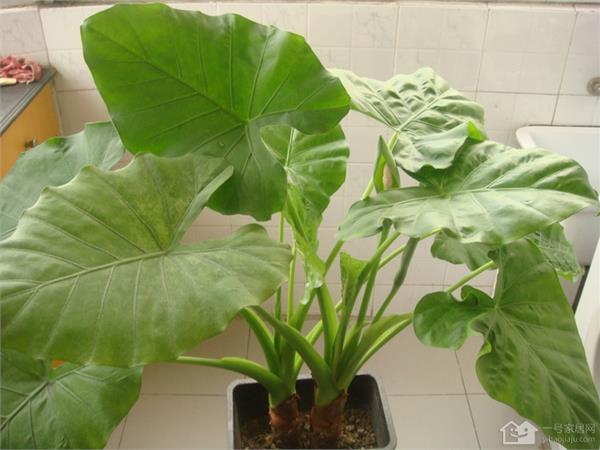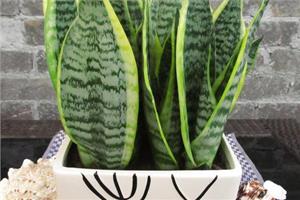The flowering of the iron tree means how to raise the iron tree to bloom.
Dishui Guanyin likes warmth, semi-shade, faster growth period and more fertilizer, so it is necessary to maintain a suitable temperature (20-30 ℃) during its growth period, to choose shade and ventilated places, and to apply Dewo liquid fertilizer every 7-15 days during the growth period. It would be better to reduce the number of fertilizers by half once a month after autumn. Fertilization can be stopped in winter.

First, the culture method of Dishui Guanyin
1. Temperature: like warmth, growing rapidly when the temperature is more than 25 ℃, and the most suitable temperature for growth is 25ml / 30C. It has a certain ability to resist cold, and the overwintering temperature can be maintained above 2 ℃.
2. Light: like semi-overcast, can not bear the exposure of strong sunlight. From May to September, shade should be provided to cover about 50% of the sun. The rest of the time should be given plenty of sunshine. Do not tolerate excessive shading, otherwise the petiole becomes thinner and longer, not only the plant shape is not beautiful, but also easy to break.
3. Watering: because the leaves are huge and consume a lot of water, they are afraid of drought. Like the slightly wet soil environment, during the growth period of watering to master "dry and wet and wet", watering should be adequate, even if it is watered more. Especially in the hot summer, we should pay more attention to the supply of water to meet the water requirements of the plant. Because of the large leaf surface, water droplets often spit out at the leaf tip in the morning, which is very strange, so it is known as "dripping Guanyin". However, it is required to keep the basin soil moist at ordinary times to ensure that the plant absorbs enough water and rely on the root pressure of the plant to transport the water to the leaf tip and spit it out; when the basin soil is dry, there will be no water to drop. In winter, the moisture should be controlled to keep the basin soil slightly moist, as long as the leaves are not soft and sagging; if the basin soil is too wet, it is easy to lead to rotten roots.
4, environmental humidity: like the humid environment, avoid dry air, the growing season is sunny and dry, should often spray water to the branches and leaves and around, in order to maintain high air relative humidity.
5. Fertilization: like fertilizer. Due to the large growth, it is necessary to supplement nutrients in time in order to make the stem grow stout, the leaves are large and bright green, and the leaves are small and yellow when lack of fertilizer. Dvordo liquid fertilizer should be applied every 7-15 days during the growth period. It would be better to reduce the number of fertilizers by half once a month after autumn. Fertilization can be stopped in winter.
6. Pruning: yellow leaves should be cut off at any time. Because the petiole is long, it is necessary to avoid breaking the petiole when moving, placing and maintaining. If it is injured, it should be cut off in time.
7. Turn the basin: turn the basin once every 1 ~ 2 years. The demand for soil is not high, but like fertile, loose and well-drained soil, we can choose Dvordo organic nutrient soil. If sufficient base fertilizer (Dvordo bio-organic fertilizer granules) is applied, the leaves can be enlarged. Due to the large number of leaves and small number, long petiole, moving plants and maintenance, should avoid damage to the leaves, otherwise it will reduce the ornamental value.
8. Reproduction: sowing, cutting, ramet, etc.
The main results are as follows: (1) sowing: wild plants often bear seeds and sow in spring. The suitable temperature for germination is 25-28 ℃, and germinates 20-25 days after sowing.
(2) insertion: it will be carried out in April. The sturdy stem is cut and grows about 10 cm, and the stem segment with several bud eyes is used as cuttings, then slightly dried and obliquely inserted or lying on the seedbed, and the depth of lying is buried in the stem segment; the cuttings can also be directly planted in the basin. Keeping the substrate moist and ambient temperature 25~2TC after insertion, it can take root and survive after 4-5 weeks.
(3) ramet: the potted plant is easy to produce many small plants in the base, which can be divided in April, and the small plant and the mother plant can be separated and planted respectively. Ramet should be carried out when the temperature reaches 20C or higher, and new buds can be produced in about 20 days on the basis of keeping the substrate moist.
2. Aquaculture of Dishui Guanyin
Remove the yellow leaves and rotten roots of dripping Guanyin. If the tubers are rootless, they should be hung in a shady place for 2 or 3 days before hydroponic culture. After planting, the roots were immersed with clean water and changed once every 2 to 3 days, and the new roots could grow after 3 days. One week later, the maintenance was carried out with Dewo multi-nutrient solution (diluted in the proportion of 1 to 400), and the nutrient solution was changed once a week. Rinse the tuber and mucus on the tuber with clean water every time you change the water or nutrient solution, and remove the rotten roots.
Matters needing attention in Dishui Guanyin
1. To remind flower friends that the white juice in the stem of dripping Guanyin is poisonous, and the dripping water is also poisonous. Accidentally touching or eating its juice will cause discomfort in the pharynx and mouth, and there is burning pain in the stomach. Special attention should be paid to preventing young children from eating by mistake. But Dishui Guanyin is not a carcinogenic plant.
2. Because dripping Guanyin is poisonous, itching or strong irritation will occur when the skin touches its juice, and eye contact with juice can cause severe conjunctivitis and even blindness. If you eat stems and leaves by mistake, you will have symptoms of nausea and pain, and in serious cases, you will suffocate, resulting in heart paralysis and death. Therefore, exposure to Dishui Guanyin should be reduced as much as possible. Families with children had better not plant.
The above is the relevant introduction of this article, I believe you have a simple understanding of this after reading it, if necessary, you can continue to pay attention to the No. 1 home network for more information.
- Prev

A detailed introduction to the efficacy and function of Calendula
A detailed introduction to the efficacy and function of Calendula
- Next

Basic information of tiger skin orchid points for attention in tiger skin orchid culture
Basic information of tiger skin orchid points for attention in tiger skin orchid culture
Related
- Wuhan Hospital Iron Tree Blooming Result Was Instantly Frightened by the Gardener Master
- Which variety of camellia is the most fragrant and best? Which one do you like best?
- What is the small blue coat, the breeding methods and matters needing attention of the succulent plant
- Dormancy time and maintenance management of succulent plants during dormancy
- Minas succulent how to raise, Minas succulent plant pictures
- What are the varieties of winter succulent plants
- How to raise succulent plants in twelve rolls? let's take a look at some experience of breeding twelve rolls.
- Attention should be paid to water control for succulent plants during dormant period (winter and summer)
- Watering experience of twelve rolls of succulent plants
- Techniques for fertilizing succulent plants. An article will let you know how to fertilize succulent plants.

